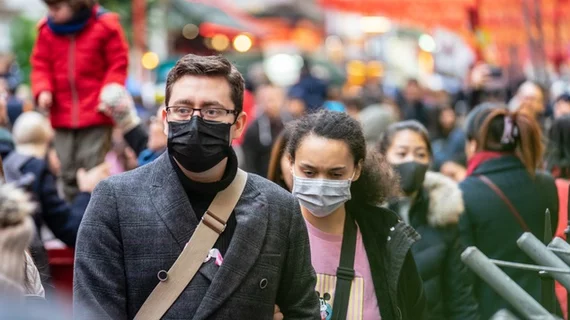COVID lung damage evident in up to 1/3 of cases 12 months after infection
A significant number of patients who have recovered from mild COVID-19 infections show lung abnormalities on imaging for a year or longer after recovering from the virus.
Though effective protocols to treat and prevent acute COVID infections have been well established by now, there are still many unknowns about how the virus affects long-term health. Efforts to understand long COVID range from evaluating its impact on mental health and fatigue to brain fog and the onset of new autoimmune disorders and beyond. Now, new research is giving providers a more detailed view of the long-term respiratory ramifications of the virus, revealing that up to one-third of patients display obvious lung damage on imaging even a year after recovering from their initial infection.
What’s more, these findings are not exclusive to severe cases of the virus and have been observed in individuals who reported having more moderate infections, according to authors of a new paper detailing the research.
“Severe COVID-19 typically results in pulmonary sequelae. However, current research lacks clarity on the differences in these sequelae among various clinical subtypes,” Xiaohong Lyu, with the Radiology Department at the First Affiliated Hospital of Jinzhou Medical University in China, and colleagues note. “This study aimed to evaluate the changing lung imaging features and predictive factors in patients with COVID-19 pneumonia in northern China over a 12-month follow-up period after the relaxation of COVID-19 restrictions in 2022.”
The team analyzed the cases of 103 individuals who were diagnosed with COVID pneumonia in 2022. Participants were divided into three groups—moderate, severe and critical—based on the severity of their infections. Low-dose CT scans were completed on all participants at baseline and then again 3, 6, and 12 months after discharge. Imaging results were then compared alongside pulmonary function tests.
During the follow-up period, just under 70% showed lung abnormalities on imaging at some point, nearly 10% of which were described as fibrotic changes. Age (65 or older), longer hospital stays and consolidation volumes at the time of infection were all correlated with the presence of abnormalities after 12 months.
By the end of the study period, 34% continued to struggle with abnormal lung function and 9% had been diagnosed with pulmonary fibrosis and restrictive ventilatory dysfunction. These findings were present in both the moderate and severe cohorts.
“Even among moderate patients with mild symptoms, over a third had persistent abnormal lung changes after one year post-COVID-19 infection,” the authors note. “Fibrotic changes are primarily observed in severe and critical patients, with these fibrosis-like changes tending to stabilize after six months and remaining relatively unchanged over time.”
The group suggests that radiologists should take note of consolidation volumes on baseline imaging of patients who have tested positive for the virus, as this could help guide strategies to blunt the long-term impact of COVID.
The study abstract is available in Academic Radiology.

